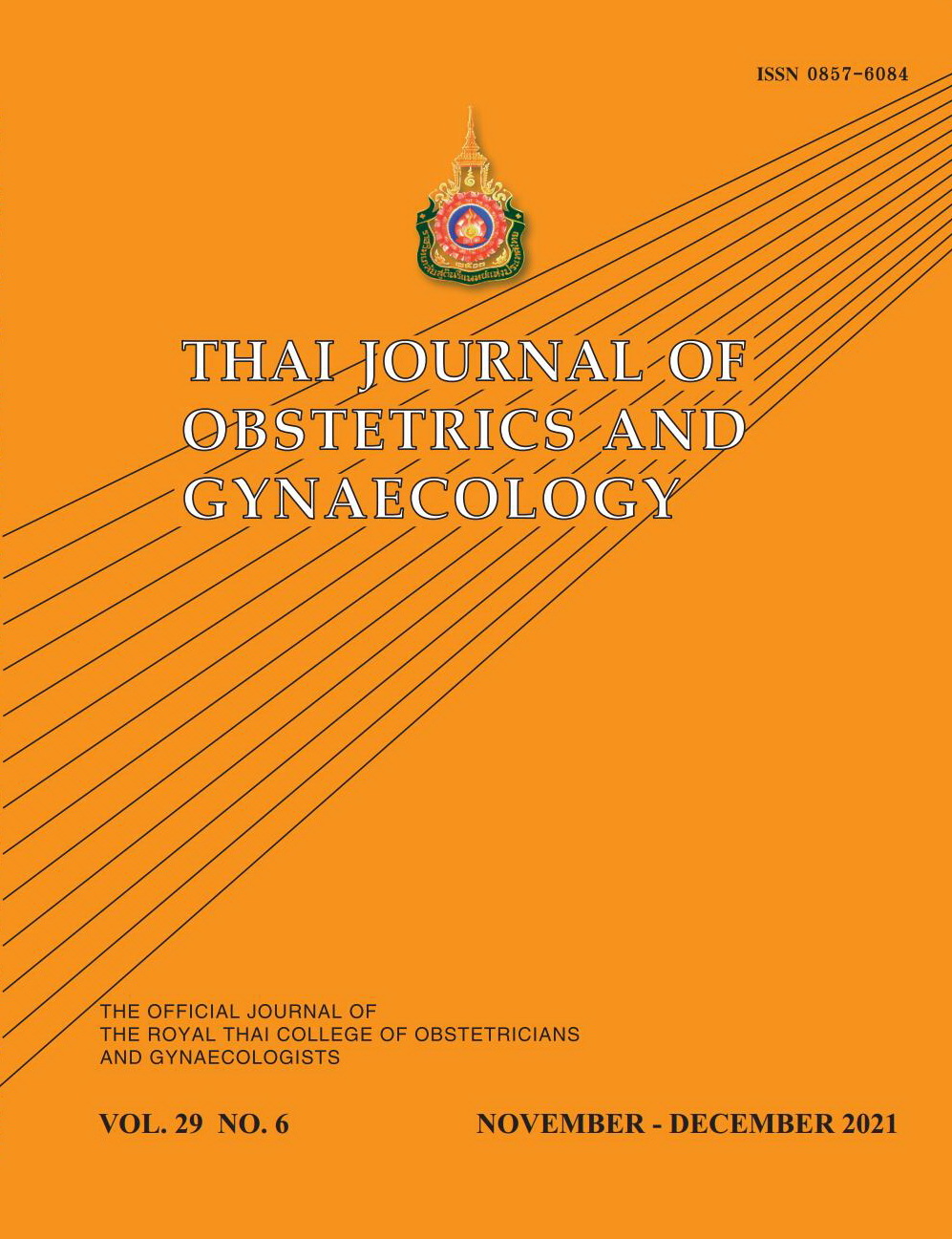Diagnostic Performance of International Ovarian Tumor Analysis-Simple Rules versus Risk Malignancy Index 2 scoring system to differentiate between Benign and Malignant Adnexal Masses
Main Article Content
Abstract
Objective: To compare International ovarian tumor Analysis -Simple rules (IOTA-SR) versus Risk of malignancy index 2 (RMI 2) scoring system to differentiate benign and malignant adnexal mass.
Materials and Methods: A prospective cohort study was conducted at Gynecology department of GCS (Gujarat Cancer Society) Medical College and Research center, Ahmedabad, Gujarat, India. One hundred and twenty-four patients from period of June 2018 to Dec 2020 with persistent adnexal tumors with informed consent underwent transvaginal and transabdominal gray-scale and Doppler ultrasound examination using a standardized examination technique and standardized terms and definitions.
Results: Diagnostic accuracy of IOTA SR and RMI 2 scoring was assessed by sensitivity, specificity, positive predictive value (PPV) and negative predictive value (NPV). In our study, IOTA SR had a sensitivity, specificity, PPV and NPV of 92.30%, 93.87%, 80% and 97.87%, respectively. On the other hand, RMI 2 scoring had a sensitivity, specificity, PPV and NPV of 62.50%, 91.30%, 71.42% and 87.50%, respectively. IOTA had better diagnostic performance than RMI 2 (chi square test 83.33 vs 39.31).
Conclusion: A management protocol based on triaging women using the IOTA SR performed significantly better than the RMI 2 -based protocol. IOTA SR was very easy to be done by gynecologist and could be used in practice to differentiate between benign and malignant adnexal masses ensuring timely and proper referral to gynecologic oncologists in developing country like India with burden of patients and limited resources.
Article Details

This work is licensed under a Creative Commons Attribution-NonCommercial-NoDerivatives 4.0 International License.
References
2. Garg S, Kaur A, Kaur Mohi J, Sibia P, Kaur N. Evaluation of IOTA simple ultrasound rules to distinguish benign and malignant ovarian tumours. J Clin Diagn Res 2017; 11:TC06–9.
3. Murthy NS, Shalini S, Suman G, Pruthvisinh S Mathew A. Changing trend in incidence of ovarian cancer-the Indian scenario. Asian Pac J Cancer Prev 2009; 10:1025-30.
4. Auekitrungrueng R, Tinnangwattana D, Tantipalakorn C, Charoenratana C, Lerthiranwong T, Wanapirak C, et al. Comparison of the diagnostic accuracy of International Ovarian Tumor Analysis simple rules and the risk of malignancy index to discriminate between benign and malignant adnexal masses. Int J Gynecol Obstet 2019;146:364-9.
5. Timmerman D, Testa AC, Bourne T, Ameye L, Jurkovic D, van Holsbeke C, et al. Simple ultrasound-based rules for the diagnosis of ovarian cancer. Ultrasound Obstet Gynecol 2008;31:681–90.
6. Kaijser J, Bourne T, De Rijdt S, et al. Key findings from the International Ovarian Tumor Analysis (IOTA) study: an approach to the optimal ultrasound based characterisation of adnexal pathology. Australas J Ultrasound Med. 2012;15(3):82-86
7. Tingulstad S, Hagen B, Skjeldestad FE, Onsrud M, Kiserud T, Halvorsen T, Nustad K. Evaluation of a risk of malignancy index based on serum CA125, ultrasound findings and menopausal status in the pre-operative diagnosis of pelvic masses. Br J Obstet Gynaecol. 1996 Aug;103(8):826-31
8. Morgante G, La Marca A, Ditto A, De Leo V. Comparison of two malignancy risk indices based on serum CA125, ultrasound score and menopausal status in the diagnosis of ovarian masses. Br J Obstet Gynaecol 1999;106:524–7.
9. Andersen ES, Knudsen A, Rix P, Johansen B. Risk of malignancy index in the preoperative evaluation of patients with adnexal masses. Gynecol Oncol 2003;90:109-12.
10. Obeidat BR, Amarin ZO, Latimer JA, Crawford RA. Risk of malignancy index in the preoperative evaluation of pelvic masses. Int J Gynecol Obstet 2004;85:255-8.
11. Ulusoy S, Akbayir O, Numanoglu C, Ulusoy N, Odabas E, Gulkilik A. The risk of malignancy index in discrimination of adnexal masses. Int J Gynecol Obstet 2007;96:186-91.
12. Chopra Sunny, Vaishya Richa, Kaur Jasbinder. An Evaluation of the applicability of the risk of malignancy index for adnexal masses to patients seen at a tertiary hospital in Chandigarh, India. J Obstet Gynecol India 2015;65:405–10.
13. Tongsong T, Tinnangwattana D, Vichak-ururote L, Tontivuthikul P, Charoenratana C, Lerthiranwong T, et al. Comparison of effectiveness in differentiating benign from malignant ovarian masses between IOTA simple rules and subjective sonographic assessment. Asian Pac J Cancer Prev 2016;17:4377-80.
14. Sayasneh A, Wynants L, Preisler J, Kaijser J, Johnson S, Stalder C, et al. Multicentre external validation of IOTA prediction models and RMI by operators with varied training. Br J Cancer 2013;108:2448–54.
15. Van Calster B, Timmerman D, Valentin L, Mclndoe A, Ghaem-Maghami S, Testa AC, et al. Triaging women with ovarian masses for surgery: observational diagnostic study to compare RCOG guidelines with an international Ovarian Tumour Analysis (IOTA) group protocol. BJOG 2012;119:662–71.


